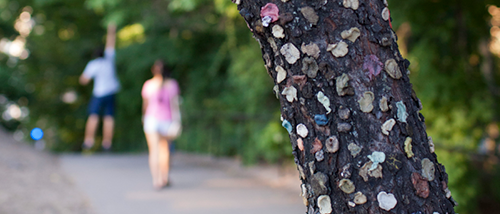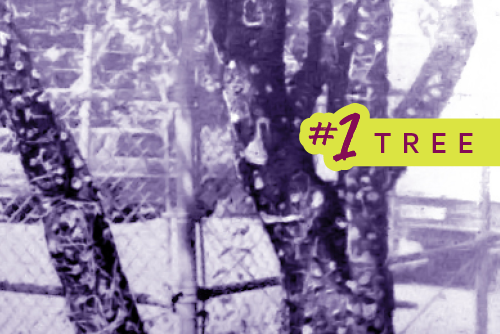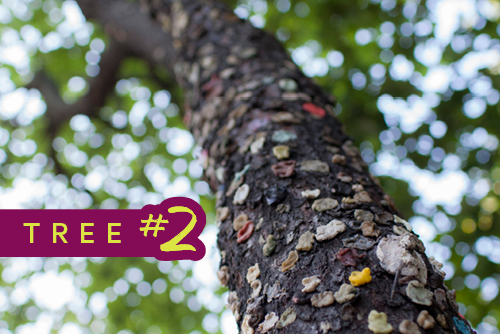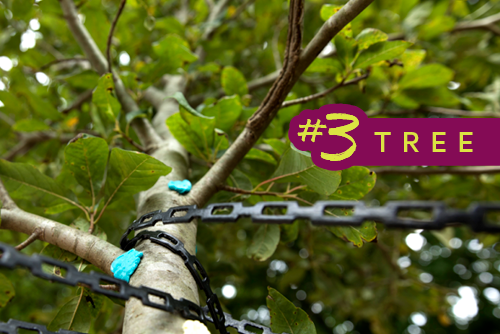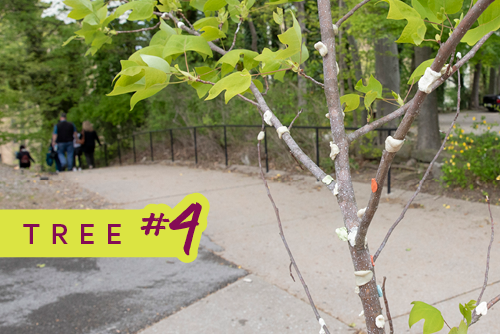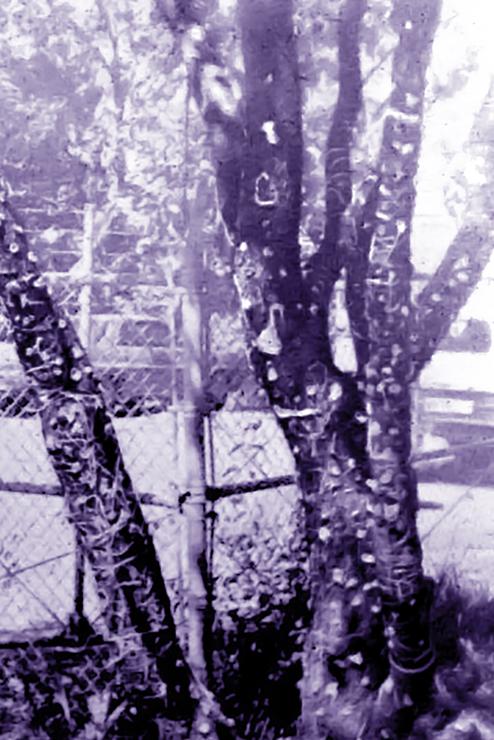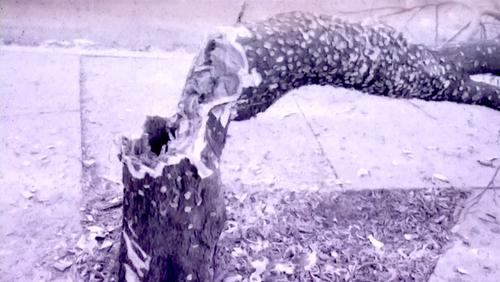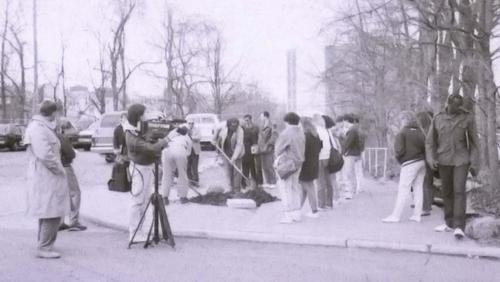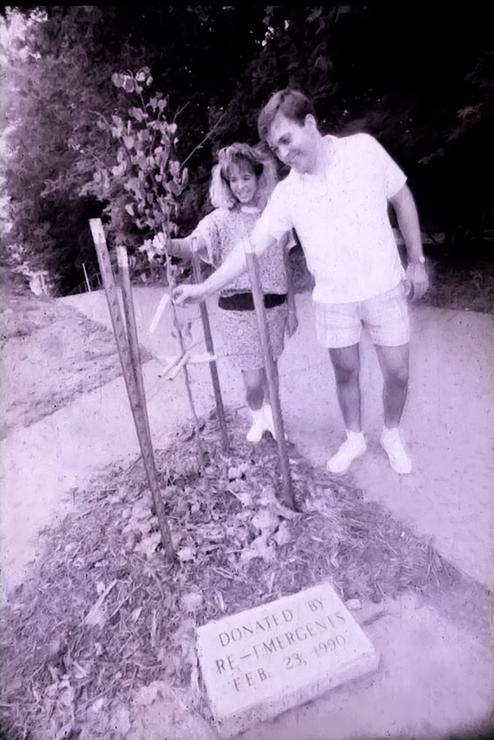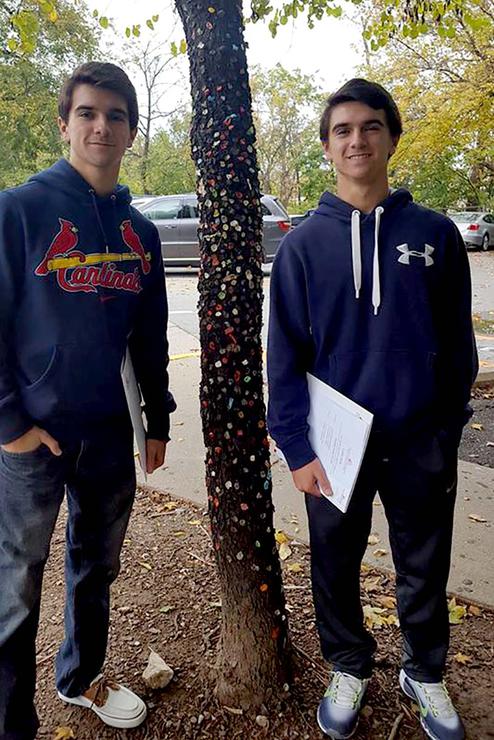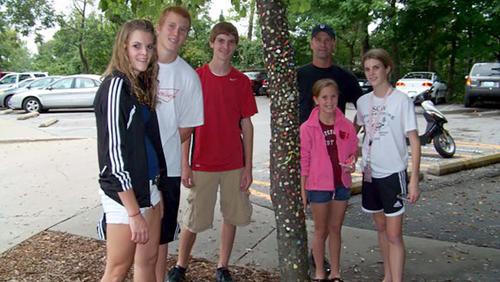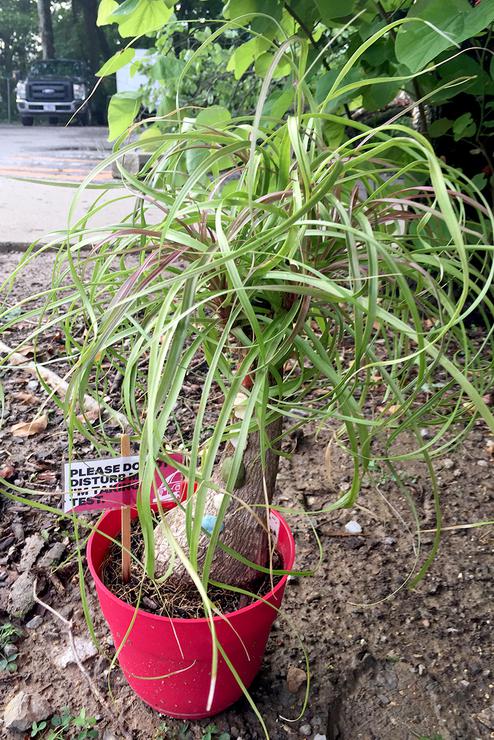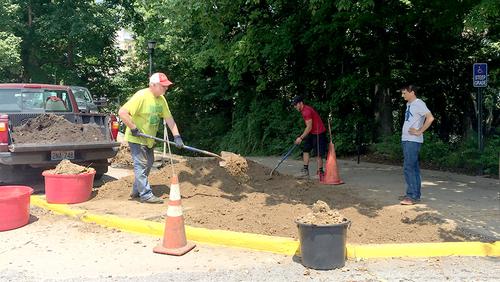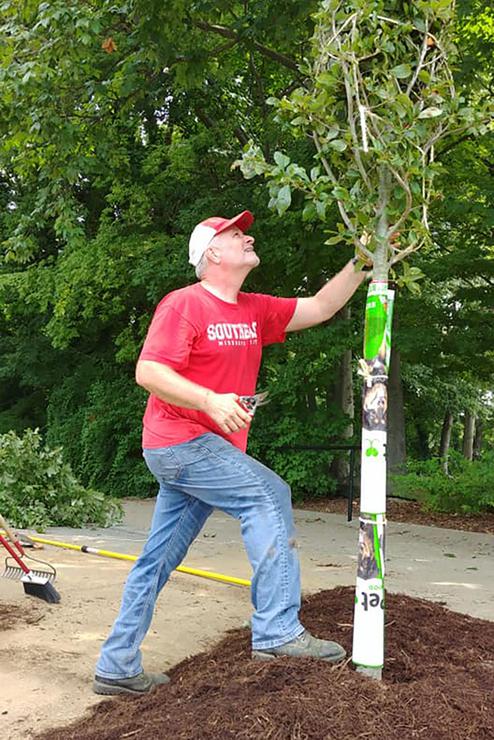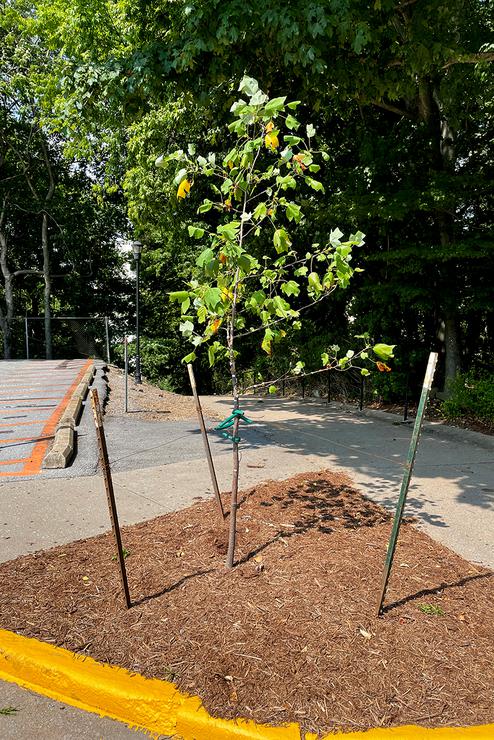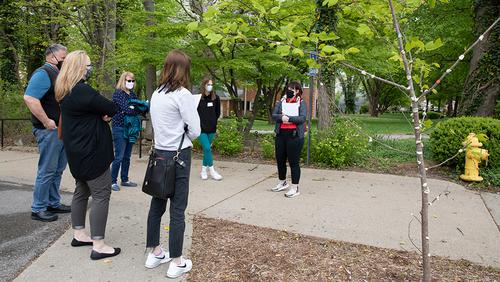Whether you find it endearing or gross, the Gum Tree is a long-held tradition here at Southeast Missouri State University.
Gum Tree Origins
How did the Gum Tree come to be? It’s a question that often comes up from those new to campus. The answer depends on who you ask. But, thanks to the extensive research of Dr. Sven Svenson, horticulturist and professor at Southeast, the origin of the tradition can be traced to the development of Towers Complex and Group Housing residence halls. The buildings were built from 1966-1968. The first picture of the Gum Tree appeared in SEMO’s yearbook, The Sagamore, volume 54 which was published in 1967.
Gum Tree #1: The Innovator
Dr. Mark Scully, president of the University from 1956-1975, reportedly banned students from chewing gum inside campus buildings. Legend has it that during the summer of 1966, a group of visiting campers left the Towers Complex chewing gum and made their trek up Cardiac Hill. Upon reaching the top, they quickly realized they needed to ditch their gum before the next activity. So, as the story goes, they stuck it on the trunk of the tree at the top of the hill and went about their way. More and more pieces of gum joined the first few, and the Gum Tree tradition was born.
The inaugural Gum Tree, a redbud, survived until tragedy struck. On October 17, 1989, someone discovered the beloved tree lying on the ground along with wood chips and sawdust near the base of the tree. Initial reports indicated the tree had fallen and someone had ‘cleaned up’ the remaining stump. However, the truth came out: heartless scoundrels cut the tree down. Who were these vandals? Students? Rivals? Concerned citizens? No police report was filed. The assailants and their motives remain a mystery to this day. Grief-stricken, a group of non-traditional students known as ‘The Re-Emergents’ raised funds to purchase another redbud from a nursery in Jackson, Missouri. The new tree was unveiled that February at a ceremony attended by several campus and Cape Girardeau VIPs.
"I think the name and location of the tree make it feel like history and allows you to be a part of our campus community. It spans generations of students, and it’s something you have in common with a fellow Southeast student dating back decades-even if little else of your experience on campus looks like theirs did."
Katie Krodinger, Director of New Student Programs

Gum Tree #2: The Resilient Redbud
By the time Dr. Svenson was hired as a professor in 2008, the trees to the east of the small redbud had grown so tall that it had to lean to reach sunlight. The strong-willed tree held on for another 10 years, but tragedy struck once again on May 25, 2018. High winds during a severe afternoon storm landed a fatal blow to the dear tree, leaving a jagged stump peppered with colorful bits of gum in its place.
Shortly thereafter, a memorial, including a small potted tree and plaque, appeared at the site. The Southeast Missouri University Foundation coordinated efforts for alumni, students, friends, and community members to raise money for a new tree. Meanwhile, a Gum Tree committee, including Dr. Svenson, was established to replace the prized piece of school history.
Soil analysis and an autopsy of Gum Tree 2 revealed that the redbud suffered from heart rot likely due to poor growing conditions. We know what you’re thinking, and no, its health wasn’t affected by the layers of gum stuck to its bark. In fact, the committee found that the gum had no effect on the tree’s health. Sidewalks around the Gum Tree, lack of sunlight, and salt runoff during winter months led to the tree’s downfall. All those factors make the area inhospitable to most tree species.
The Gum Tree: a timeline
-
Summer 1966-October 1989
The inaugural Gum Tree, a redbud. -
May 1990-May 2018
The first replacement, also a redbud. -
August 2018-Summer 2020
A black gum tree, a native species. -
Fall 2020-present
A tulip poplar, also a native species
Gum Tree #3: The Valiant Effort
The Gum Tree Committee recommended planting a native species, a black gum tree, in the original location. Resistant to salty soils and equipped with a deep root system, this species would also be less likely to interfere with the surrounding pavement.
Two ‘Wildfire’ black tupelo gum trees were sourced from a nursery in McMinnville, Tennessee. On August 3, 2018, one was planted at the Gum Tree location and the other near the Charles Hutson Horticulture Greenhouse. Students, alumni, and visitors alike admired the beautiful Gum Tree with its vibrant red leaves for two short years. Svenson said the drought-like conditions in the summer of 2020 are likely what did Gum Tree 3 in. Its counterpart seemed to fair much better. However, that fall, a deer raked its antlers across the bark of the second tree, fulfilling the Gum Tree curse.
Gum Tree #4: The Understudy
The fourth and current Gum Tree was planted in the fall of 2020. It is a tulip poplar, also a native species. The tree is very small, but that hasn’t stopped students from leaving their gum on its trunk.
Unfortunately, the Gum Tree location just isn’t conducive for a tree to thrive. Dr. Svenson said changes to the surrounding area would need to be made for any tree to truly flourish.
"As a university founded in 1873, there is a long history of traditions that have emerged over the years with the Gum Tree being a very special one. You cannot mention the Gum Tree without mentioning Cardiac Hill because, as legend has it, Cardiac is the reason the Gum Tree came into existence."
Lenell Hahn, Director of Admissions

Love for the gum tree
But it’s a decades-old tradition. One that many people have fond memories of according to Director of Alumni Relations, George Gasser. “The reaction of alumni to the Gum Tree is something I always look forward to when taking alums around campus,” said Gasser. “More often than not, they tell the story that if you start chewing a piece of gum at the bottom of Cardiac Hill, it will have lost all its flavor by the time you get to the top!”
The Gum Tree is even special to perspective Southeast students, according to Lenell Hahn, Director of Admissions. “We actually mail them a piece of gum on a postcard to invite them to visit campus and be a part of the tradition,” said Hahn. “Families think it is so cool and look forward to getting to experience Cardiac Hill and sticking their gum to the Gum Tree.” Current graduate student Andrew Miller admitted the tradition caught him off guard at first, “While I thought it was a little odd on my tour Junior year of high school, it gave the tour a more personal feel. The Gum Tree certainly made a positive impact on me.”
Gum Tree #5
So, what’s next? The Gum Tree committee is back on the job and devoted to continuing the Gum Tree custom alive. We're told there are several options on the table, but nothing set in stone just yet. Rest assured, the Gum Tree tradition will continue at Southeast, you’ll just have to wait and see how the solution shapes up.
The Gum Tree Through the Years
-
 The original Gum Tree in all its glory. (Source: Photo Services Collection, Special Collections & Archives, Kent Library)
The original Gum Tree in all its glory. (Source: Photo Services Collection, Special Collections & Archives, Kent Library) -
 The scene of the crime: someone cut down the beloved tree in October 1989. (Source: Photo Services Collection, Special Collections & Archives, Kent Library)
The scene of the crime: someone cut down the beloved tree in October 1989. (Source: Photo Services Collection, Special Collections & Archives, Kent Library) -
 Dignitaries from campus and Cape Girardeau joined with students to dedicate the second gum tree. (Source: Photo Services Collection, Special Collections & Archives, Kent Library)
Dignitaries from campus and Cape Girardeau joined with students to dedicate the second gum tree. (Source: Photo Services Collection, Special Collections & Archives, Kent Library) -
 Students put gum on the second Gum Tree. (Source: Photo Services Collection, Special Collections & Archives, Kent Library)
Students put gum on the second Gum Tree. (Source: Photo Services Collection, Special Collections & Archives, Kent Library) -
 Brandon and Collin Roth stop for a photo by Gum Tree 2 while on a campus tour. (Source: Beth Fraley Roth)
Brandon and Collin Roth stop for a photo by Gum Tree 2 while on a campus tour. (Source: Beth Fraley Roth) -
 Students and family pose by Gum Tree 2. (Source: Michael Wittich)
Students and family pose by Gum Tree 2. (Source: Michael Wittich) -
 The second Gum Tree was no match for a severe storm. (Source: Dr. Sven Svenson)
The second Gum Tree was no match for a severe storm. (Source: Dr. Sven Svenson) -
 Students set up a small memorial at the site of the Gum Tree. (Source: Dr. Sven Svenson)
Students set up a small memorial at the site of the Gum Tree. (Source: Dr. Sven Svenson) -
 Crews work to prepare the small plot of land for the planting of the third Gum Tree. (Source: Dr. Sven Svenson)
Crews work to prepare the small plot of land for the planting of the third Gum Tree. (Source: Dr. Sven Svenson) -
 Dr. Sven Svenson examines the third Gum Tree shortly after it was planted. (Source: Dr. Sven Svenson)
Dr. Sven Svenson examines the third Gum Tree shortly after it was planted. (Source: Dr. Sven Svenson) -
 The fourth Gum Tree, a tulip poplar, sits near the top of Cardiac Hill.
The fourth Gum Tree, a tulip poplar, sits near the top of Cardiac Hill. -
 The Gum Tree continues to be a talking point for new students and their families.
The Gum Tree continues to be a talking point for new students and their families.
